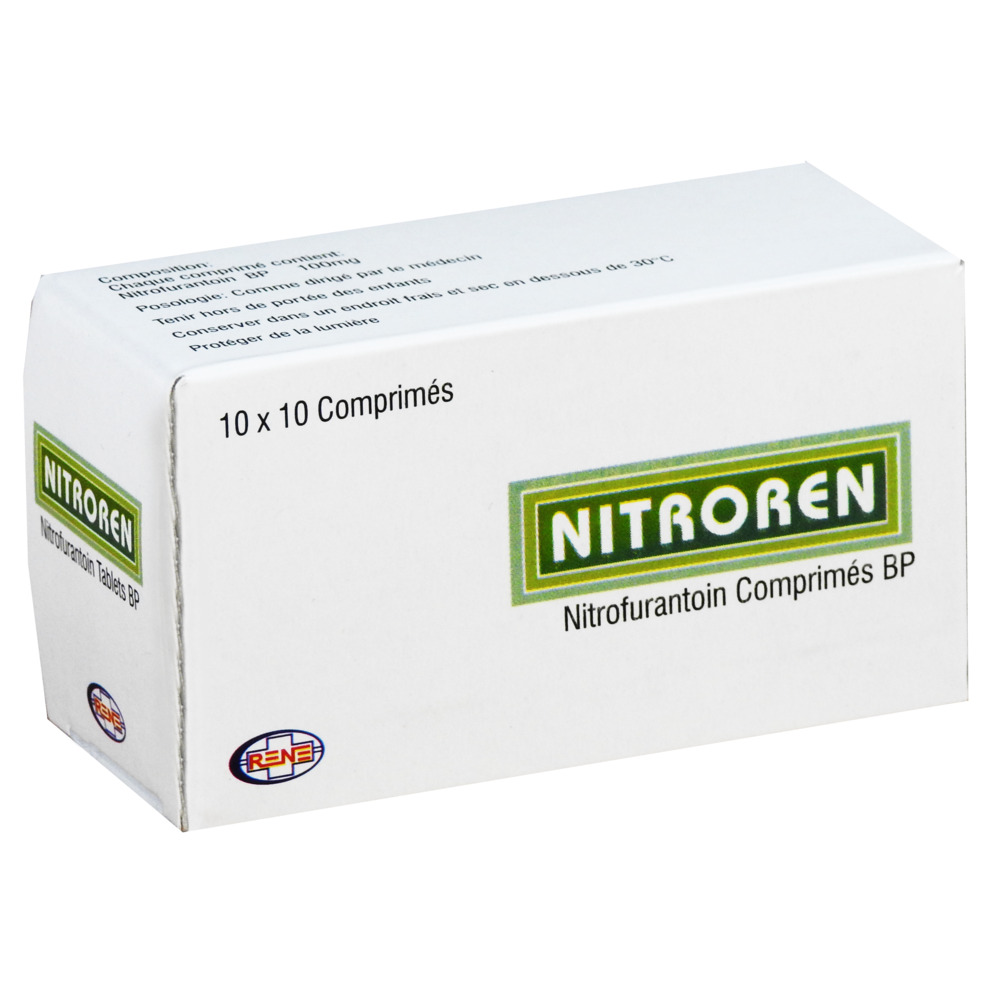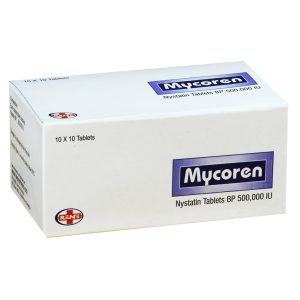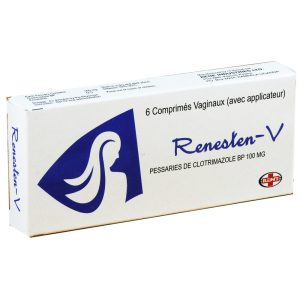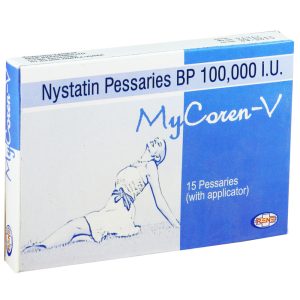Nitroren tablets (Nitrofurantoin) is an antibacterial that acts on most gram-positive and gram-negative urinary tract pathogens. It is effective against the enterococci in vitro as well as various other Gram-positive species including staphylococci, streptococci, and corynebacteria. Most strains of Escherichia coli are particularly sensitive to nitrofurantoin.
Presentation
Bulk pack of 1000’s tablets
Blister pack of 10×10’s tablets
Composition
Each tablet contains:
Nitrofuratoin BP 100mg
Clinical pharmacology:
Nitrofurantoin is bactericidal in vitro to most Gram-positive and Gram-negative urinary tract pathogens. The mode of action appears to depend on the formation of reactive intermediates by reduction; this process occurs more efficiently in bacterial than in mammalian cells. It is effective against the enterococci in vitro as well as various other Gram-positive species including staphylococci, streptococci, and corynebacteria. Most strains of Escherichia coli are particularly sensitive to nitrofurantoin but Enterobacter and Klebsiella spp. are less susceptible and some may be resistant. Pseudomonas aeruginosa is resistant as are most strains of Proteus spp
Pharmacokinetics
Nitrofurantoin is readily absorbed from the gastro-intestinal tract. The absorption rate is dependent on crystal size. The presence of food in the gastro-intestinal tract may increase the bioavailability of nitrofurantoin and prolong the duration of therapeutic urinary concentrations. Following absorption, concentrations in blood and body tissues are low because of rapid elimination, and antibacterial concentrations are not achieved. Nitrofurantoin crosses the placenta and the blood-brain barrier and traces have been detected in breast milk. Nitrofurantoin has been metabolized in the liver and most body tissues while about 30 to 40% of the dose is excreted rapidly in the urine as unchanged Nitrofurantoin. Some tubular reabsorption may occur in acid urine. Average doses give a concentration of 50 to 200µg per ml in the urine in patients with normal renal function.
Uses
Nitrofurantoin is used in the treatment of uncomplicated lower urinary-tract infections, including for prophylaxis or long term suppressive therapy in recurrent infection.
Dosage and administration:
Nitrofurantoin is given by mouth usually in dose of 50 mg to 100 mg four times daily, with food or milk.
In uncomplicated infections 100 mg twice daily may be adequate. Treatment is usually continued for 7 days. A usual long-term prophylactic dose is 50 to 100 mg at bed time.
Infants over 3 months of age and older children may be given 3 mg per kg body-weight daily in 4 divided doses by mouth. For long term prophylactic therapy 1 mg per kg once daily may be adequate.
Contra-Indications and Warnings
Precautions:
Nitrofurantoin should not be given to patients with impaired renal function. It is also contra-indicated in patients known to be hypersensitive to nitrofurans and in those with a deficiency of glucose -6-phosphate dehydrogenase and in infants less than three months old. Nitrofurantoin should be used with caution in nursing mothers, elderly patients who may be at increased risk of toxicity, particularly acute pulmonary reactions. All patients undergoing prolonged therapy should be monitored for changes in pulmonary function and the drug should be withdrawn at the first signs of pulmonary damage. Care is required in patients with pre-existing pulmonary, hepatic, neurological or allergic disorders and those with condition (such as anaemia, diabetes mellitus, electrolyte imbalance, debility or vitamin B deficiency) which may predispose to peripheral neuropathy
Adverse Effects:
The most common adverse effects encountered with nitrofurantoin involve the gastro-intestinal tract. They are dose-related and generally include nausea, vomiting and anorexia, abdominal pain and diarrhoea. Neurological adverse effects include headache, drowsiness, vertigo, dizziness, nystagmus and intracranial hypertension. Hypersensitivity reactions such as skin rashes, urticaria, pruritus, fever and angioedema may occur. Acute pulmonary sensitivity reactions characterized by sudden onset of fever, chills, eosinophilia cough, chest pain, dyspnoea, pulmonary infiltration or consolidation and pleural effusion may occur.
Interactions:
Nitrofurantoin and the quinolone antibacterials are antagonistic in vitroand should not be used together. The antibacterial activity of nitrofurantoin may be decreased in the presence of carbonic anhydrase inhibitors and other drugs that alkalinize the urine. Probenecid or sulfinpyrazone should not be given with nitrofurantoin as they may reduce its excretion. Magnesium trisilicate may reduce the absorption of nitrofurantoin.
Pharmaceutical Precautions
Do not Store above 30ºC. Protect from light. Keep all medicines out of reach of children.
Medicine Classification
Prescription Only Medicine.







